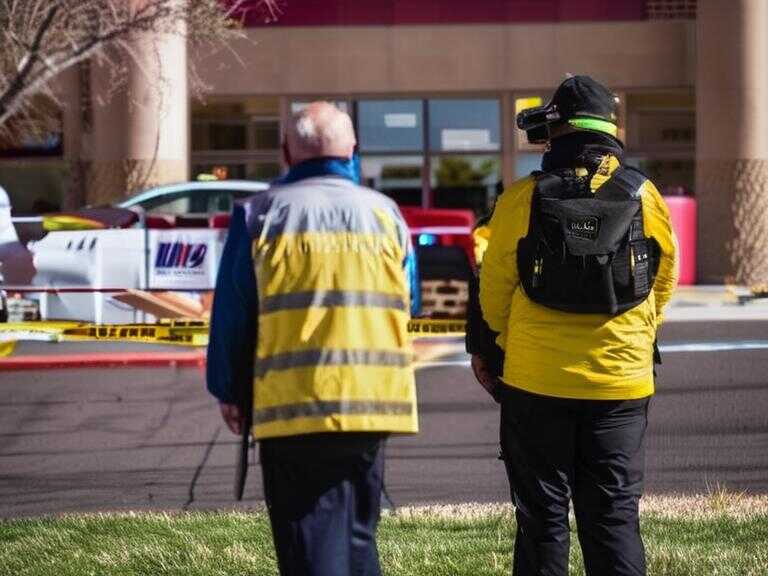
U.S. Deploys Troops to Alaska as Russian Military Presence Increases in the Region
The U.S. military has increased its presence in Alaska amid Russian and Chinese military activities nearby, prompting calls for a stronger military response.

The U.S. military has deployed approximately 130 soldiers to a remote Aleutian island in western Alaska along with mobile rocket launchers due to an uptick in Russian military aircraft and vessels approaching U.S. territory. This decision was made in response to the recent increase in Russian military activity in the vicinity, particularly the joint Russian and Chinese military drills.
Recent Russian Military Activity
In the past week, eight Russian military aircraft and four naval vessels, including two submarines, have come within close proximity to Alaska. This surge in Russian military presence prompted the U.S. military to take action by sending troops and equipment to bolster its defenses in the region.
Despite the increased Russian military activity, a Pentagon spokesperson emphasized that there was no cause for alarm, as none of the Russian planes breached U.S. airspace. The spokesperson, Maj. Gen. Pat Ryder, assured the public that the U.S. closely monitors such incidents and is prepared to respond if necessary.
Deployment to Shemya Island
As part of a "force projection operation," the U.S. Army deployed the soldiers and equipment to Shemya Island, located approximately 1,200 miles southwest of Anchorage. The island is home to a U.S. Air Force air station that has been operational since World War II. The deployed soldiers brought with them two High Mobility Artillery Rocket Systems (HIMARS).
Response to Joint Military Exercises
U.S. Sen. Dan Sullivan, representing Alaska, revealed that the U.S. military also dispatched a guided missile destroyer and a Coast Guard vessel to the western region of Alaska in response to the Russian and Chinese "Ocean-24" military exercises in the Pacific and Arctic oceans, which commenced on September 10. The North American Aerospace Defense Command (NORAD) reported detecting and tracking the Russian military planes operating off Alaska over a four-day period.
Russian Incursions into Alaskan Airspace
NORAD noted that the Russian military incursions into Alaskan airspace have fluctuated yearly, with an average of six to seven intercepts per year. In the previous year, 26 Russian planes entered the Alaska Air Defense Identification Zone, and there have been 25 incursions so far this year. These incursions occur in a zone beyond U.S. sovereign airspace, where U.S. expectations for aircraft self-identification apply.
The U.S. Coast Guard has also been active in monitoring foreign military vessels in the region. Recently, the U.S. Coast Guard Cutter Stratton tracked four Russian Federation Navy vessels approximately 60 miles northwest of Point Hope, Alaska. The Russian fleet consisted of a Severodvinsk-class submarine, a Dolgorukiy-class submarine, a Steregushchiy-class frigate, and a Seliva-class tug. The presence of these vessels highlights the ongoing military activities in the vicinity of U.S. waters.
International Naval Presence
In August 2023, the U.S. Navy deployed four destroyers to the Alaskan coast in response to the sighting of 11 Chinese and Russian warships patrolling in international waters within the Exclusive Economic Zone. This coordinated naval presence reflects the strategic importance of the region amidst increasing military activity from foreign powers.
Call for Increased U.S. Military Presence
In light of the escalating military activities in the region, Senator Sullivan has called for an expanded U.S. military presence in the Aleutians. He advocated for a strong response to Russian President Vladimir Putin and Chinese President Xi Jinping, emphasizing the critical role the Arctic plays in great power competition between the U.S., Russia, and China.
Sullivan's proposal includes reopening the shuttered Naval Air Facility Adak located in the Aleutians, which was closed in 1997. This move aims to enhance the U.S.'s military capabilities in the region to effectively address the growing challenges posed by foreign military activities.
In parallel, Russia has also expanded its military presence in the Arctic, unveiled two nuclear submarines as a demonstration of its strategic intent in the region. The unveiling of these submarines signifies a significant shift in Russia's military posture in the Arctic, further intensifying the geopolitical dynamics in the area.
Share news















